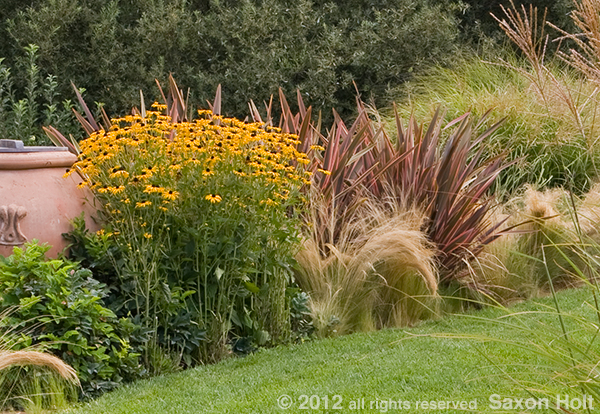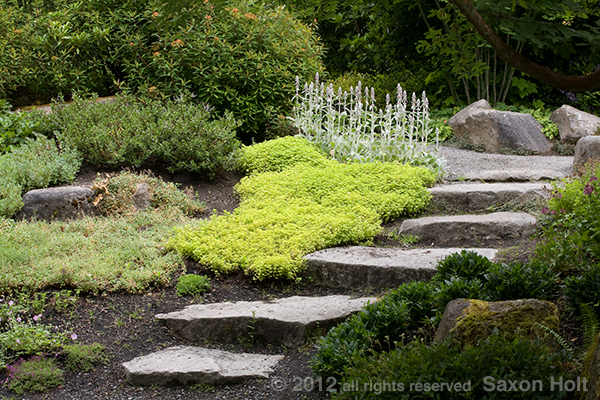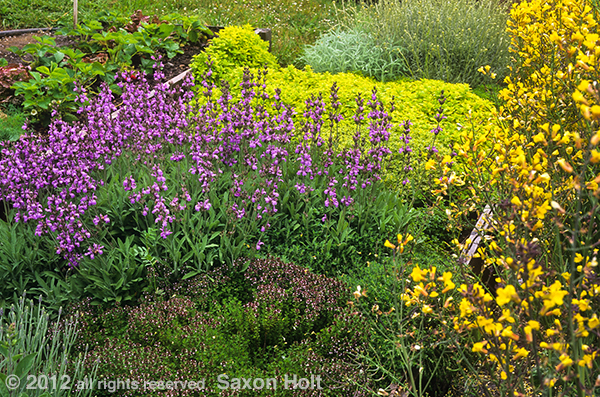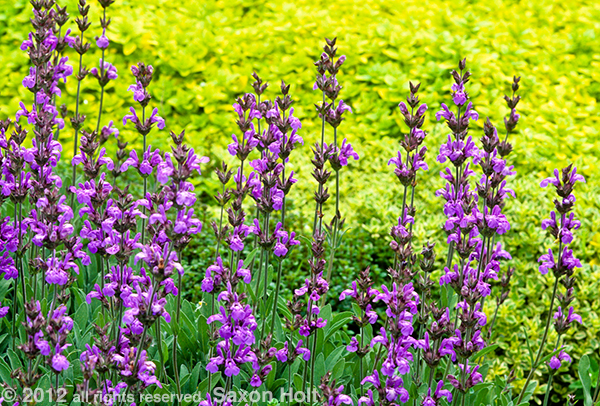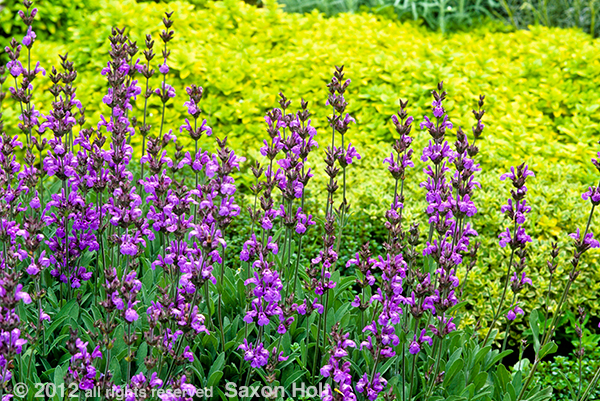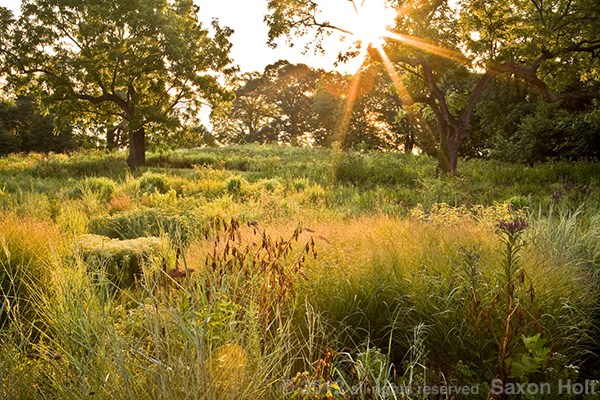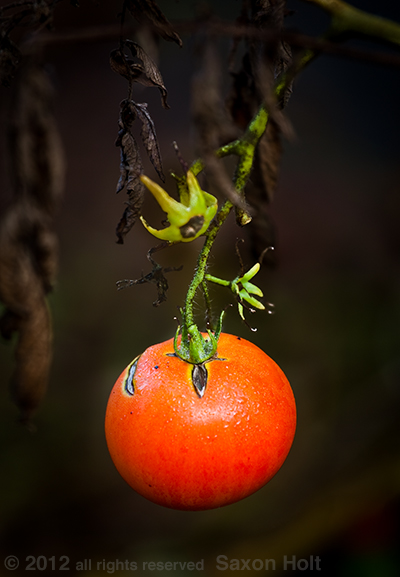We finish the chapter on ‘Good Garden Photography’ with part six – telling stories. I will have a whole chapter, ‘Think Like a Gardener’ that is about finding the themes that can be found in all good gardens, but for now and as you review your year’s images, think about what you are saying with your images. What was the garden saying to you ?
We started the chapter with good composition, filling your entire frame with just those elements that bring balance to the photo. We talked about light, and paying homage to what you see in a gardens. A good photo will do all this and then tell a story, state an opinion, communicate what you really saw.
In the opening photo, I saw the grasses flow around the Phormiums. I saw companion plants celebrating each other. The yin and yang of spikes and billowing grass really speak to how grasses add softness, bulk, and movement to a garden; and how spikes add structure.
I saw it right away when I photographed this border.
The border photo is fine and serviceable but tells little about the photographer, and really, nothing special about the garden. Sometimes you have to work the scene a bit to get to the elemental photo, the one where you say something about the scene in front of you.
It is one of the great joys of garden photography to be hunting for these photos, to distill a grand garden experience down to the story you feel and want to tell. When photos tell stories, when they reveal not just the garden, but what the photographer has to say about it, they are ‘good’ photos.
Now that winter is upon us it is a great time to go through the photos you have taken and look for the stories. No doubt you took many photos in this past gardening season, and you never really edited them down. Look back from a distance now and see which ones speak to you, which ones have stories to tell.
Here are a couple sequences of photos where I worked the scene until I got to the story. The more I looked at the garden, the more I understood what it was that made me want to capture it.
This wide view of a stepping stone path is not a bad picture, but all the empty ground and wasted space keep it from being a good one.
Coming in tighter really gets to the story of ground covers and still shows them in a garden context with the path. A much stronger photo.
In this next sequence from Ravenhill Herb Farm, I remember how I was amazed the first time I saw culinary sage in flower.
At first all I could see was the the herb garden itself but I realized what was exciting me was the purple flowers of the sage against the chartreuse foliage of the golden oregano behind it.
Often the better photo is made by coming in tighter on your subject as you strip away elements of a scene that to do not contribute to your story. Be conscious of what you are seeing, and compose your picture, fill your frame, with just those elements those elements that contribute.
Bonus feature from the e-book: Composition Tip
The photo above was cropped so that the block of chartreuse color bleeds off the edges and fills about 2/3 of the frame. (Remember our 1/3 and 2/3 ratio lesson?) Here is the original:
As you go through your photos this winter, use your crop tool. Tighten up some of those photos the way a writer would tighten up a story.
While coming in tighter on your subject is often the way to a better, more graphic composition and a more elemental, balanced photo, sometimes it is the wide angle photo that tells the story.
I was once commissioned to photograph a new gate and entry path for the landscape architect Robyn Sherrill. The story is not simply the gate but the wider context with the landscape and Japanese maple trees.
Further, when I was in the garden on the shoot day, the story became about the wind and how the trees were moving but the architecture was not. A tighter shot of just the gate would not tell the same story. Original post Wending and Wind.
I took lots of vignettes and plant combinations in the American Horticultural Society’s meadow garden for The American Meadow Garden but it is this wide angle photo that really tells the story of how I felt in the morning dawn’s light.
Let your camera become an extension of your eyes and what you feel. Be conscious of what it is that you are seeing and find a way to get that “it” to fill your frame. The final story will often be a series of photos, a series of vignettes, but each one should be distilled down to its own essence.
It is very satisfying though when one photo says it all. Here in Northern California as we get our first frost, the last tomatoes still linger.
Nice composition(1). Nice blocks of color (2) and light (3). Nice mood (4). A little provocation (5). A little story(6). End of Chapter One.


